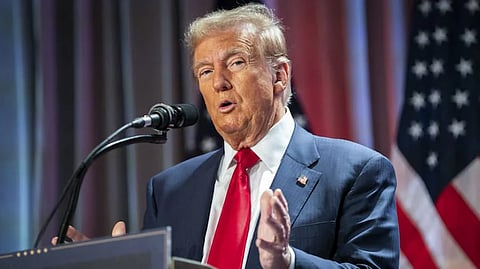
- Home
- Live Blog
- Breaking News
- Top Headlines
- Cities
- NE News
- Sentinel Media
- Sports
- Education
- Jobs

Earlier this year, when Trump announced a new tariff regime, it signalled the US’ most protectionist stance since the 1930s. Soon thereafter, Trump paused his reciprocal tariffs, only to have them reinstated again on August 1, with exceptions for bilateral deals. This in turn caused uncertainty and led to increased costs for US consumers and businesses, disrupted the global supply chains, and triggered retaliatory tariffs from some of the major trade partners of the US. Trump’s argument is that the tariffs would boost American manufacturing and protect jobs. But his volatile international trade policy has already thrown the world economy into chaos. While Trump has specifically targeted some countries like India, Canada, Brazil, and Taiwan and imposed steep tariffs on exports from dozens of trading partners, including Canada, Brazil, India, Switzerland, and Taiwan, his concept is that it will reorder the global economy. While Canada is the worst hit, facing a 50% tariff rate, Trump has also announced an unspecified penalty in addition to the new tariff rates, thus brushing over a dozen countries the wrong way. As far as India is concerned, the US president’s decision to impose 25% tariffs on goods imported from India could hit the country’s growth prospects, with experts saying it is likely to pose a headwind to India’s GDP growth. Important to note, India and the US have held several rounds of negotiations for a trade deal over the past few months. New Delhi had even reduced tariffs on goods like bourbon whisky and motorcycles to pacify the US. One issue at the core of Trump’s announcements as far as India is concerned is that the US runs a $45bn (£33bn) trade deficit with India, which the US president appears keen to reduce. But more important is the fact that the US is sore over India continuing to purchase a vast majority of their military equipment from Russia. While that is his problem, the 25% tariff and additional penalties that he has announced will leave India in a worse condition in relation to other Asian economies like Vietnam and China, two major countries against which New Delhi is competing for investment and industrialization. Also interesting to note, US tariffs on Chinese imports have already sharply been pulled down from 145% to 30% after a series of high-level negotiations. Similarly, the US has also reduced tariffs on Vietnam from 46% to 20%. Tariffs are typically taxes charged on goods imported from other countries. Exporters are indirectly impacted by higher tariffs because these taxes make goods costly for end consumers and lead to reduced demand. This can force exporters to cut prices in order to remain competitive, impacting their margins. No wonder Prime Minister Narendra Modi on Saturday sent a clear message to the United States amid an escalating trade standoff, saying the welfare of farmers, small industries, and youth remains his government’s top priority. With the objective to take Trump’s threat head-on, Modi has also appealed to the business and industry captains that, as the world is going through such an atmosphere of instability, Indians too should sell only indigenous goods.